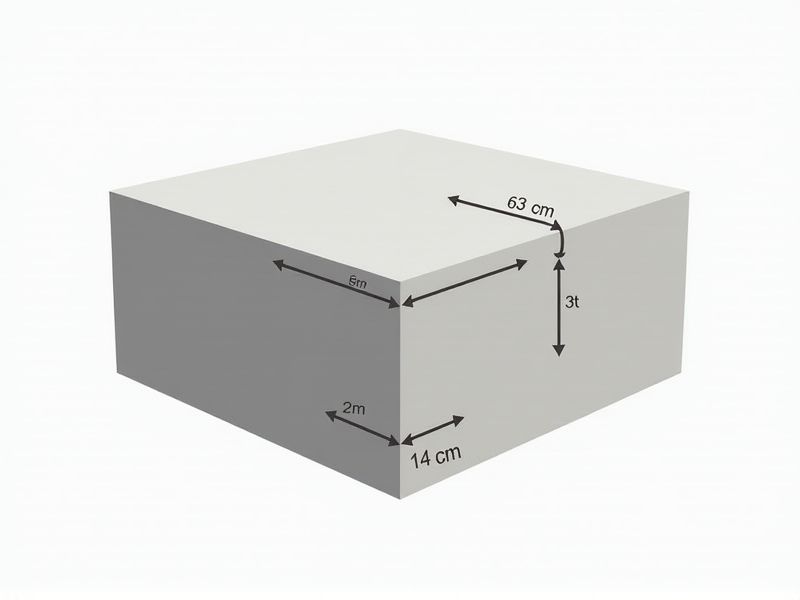
Curb cuts, also known as curb ramps, are designed to make sidewalks accessible to people using wheelchairs, strollers, or bicycles. The standard width for a curb cut is typically a minimum of 36 inches (915 mm) to accommodate most users. The slope should not be steeper than 1:12, which means for every inch of height, the ramp extends at least 12 inches horizontally. Additionally, side flares on the ramp should have a slope no steeper than 1:10 to help prevent falls and ensure safety for all pedestrians.
Slope Ratio
The standard slope ratio for curb cuts typically ranges from 1:12 to 1:20, ensuring accessibility for individuals with mobility challenges. This means that for every inch of vertical rise, there should be 12 to 20 inches of horizontal run, promoting safe navigation for wheelchairs and strollers. Maintaining this slope ratio is crucial for compliance with the Americans with Disabilities Act (ADA) guidelines, which emphasize the importance of ease of access. Regular inspections and maintenance should be conducted to ensure that curb cuts remain within these specified slope ratios, providing a safe and functional pathway for all users.
Width Of Curb Cut
The standard width of a curb cut typically ranges from 1.2 to 1.5 meters (4 to 5 feet) to ensure safe and easy access for pedestrians, particularly those using wheelchairs or mobility aids. Curb cuts must also be constructed with a gentle slope, usually not exceeding a 1:12 ratio to facilitate smooth transitions from sidewalks to roadways. Compliance with these specifications ensures adherence to accessibility regulations, such as the Americans with Disabilities Act (ADA). Properly designed curb cuts significantly enhance urban mobility, making public spaces more inclusive for everyone.
Landing Dimension
The landing dimension for curb cuts should measure a minimum of 48 inches in width to ensure accessibility for individuals using wheelchairs or mobility devices. The landing area must also maintain a firm and stable surface to facilitate safe navigation. You should install curb cuts with a slope no steeper than 1:12, which allows for easy transition from the sidewalk to the roadway. Proper drainage is essential; aim to keep water from pooling on the landing surface, which should be sloped away from the curb to enhance safety and usability.
Flare Slope
The standard for curb cuts emphasizes a flare slope, typically ranging from 1:10 to 1:12, to ensure accessibility for individuals with mobility challenges. This slope gradient not only facilitates easier transitions from sidewalks to roadways but also enhances safety by reducing the risk of falls. Most guidelines recommend a minimum width of 36 inches for curb cuts, allowing ample space for wheelchairs and pedestrians alike. Compliance with these standards can significantly improve urban environments, making them more inclusive for all users.
Cross Slope
The standard for curb cuts emphasizes a maximum cross slope of 2% to ensure accessibility for individuals with mobility devices. This slope allows for smooth transitions between sidewalks and street levels, enhancing safety and usability. Compliance with these standards is critical in urban planning, impacting over 61 million Americans with disabilities. Your adherence to these guidelines can facilitate equitable access in public spaces, thereby improving community inclusivity.
Detectable Warnings
Detectable warnings on curb cuts play a crucial role in enhancing safety and accessibility for pedestrians, particularly individuals with visual impairments. These tactile surfaces, typically made of raised, truncated domes, alert users to the presence of a street or a hazardous drop-off, thereby reducing the risk of accidents. Current guidelines recommend a yellow color for these warnings, with a specific size of 2-4 inches in height, ensuring they are easily identifiable. Implementing these standards across urban infrastructure ultimately promotes inclusivity, allowing everyone to navigate public spaces with greater confidence.
Ramp Length
Curb cut standards specify that the ramp length must align with a 1:12 slope ratio, ensuring accessible transitions for individuals using wheelchairs or other mobility aids. For instance, a 30-inch vertical rise requires a minimum ramp length of 30 feet to comply with ADA guidelines. The ramp should have a space of at least 36 inches in width, allowing easy navigation. Proper drainage provisions must also be included to prevent water accumulation, ensuring safety and practicality in various weather conditions.
Ada Compliance
Curb cuts are essential for ensuring accessibility, as they must comply with the Americans with Disabilities Act (ADA) standards. The minimum width for curb cuts is 36 inches, allowing for wheelchair maneuverability, while a maximum running slope of 1:12 is mandated to facilitate easier navigation. You should also ensure that surface materials are stable, firm, and slip-resistant, with detectable warnings placed on curb ramps to alert visually impaired pedestrians. It's vital for municipalities to regularly inspect and maintain these curb cuts to uphold accessibility standards and improve urban mobility for all individuals.
Surface Texture
The surface texture of a curb cut is critical for ensuring accessibility and safety for individuals with mobility challenges. A textured surface provides better traction, reducing the risk of slips for users navigating from the sidewalk to the street. According to the Americans with Disabilities Act (ADA), the surface should be stable and firm, ideally complying with guidelines that specify a coefficient of friction value of at least 0.8 for safe maneuverability. Implementing textured surfaces not only enhances safety but also contributes to a more inclusive environment for all pedestrians.
Alignment With Pedestrian Path
Curb cut standards emphasize precise alignment with pedestrian pathways to enhance accessibility and safety. Properly aligned curb cuts can improve the mobility experience for approximately 19% of the population living with disabilities. The Americans with Disabilities Act (ADA) mandates that curb cuts be constructed at a slope not exceeding 1:12, ensuring smooth transitions for wheelchair users. Maintaining clear accessibility guidelines is essential for fostering inclusive urban environments that promote independence and navigation for everyone.
